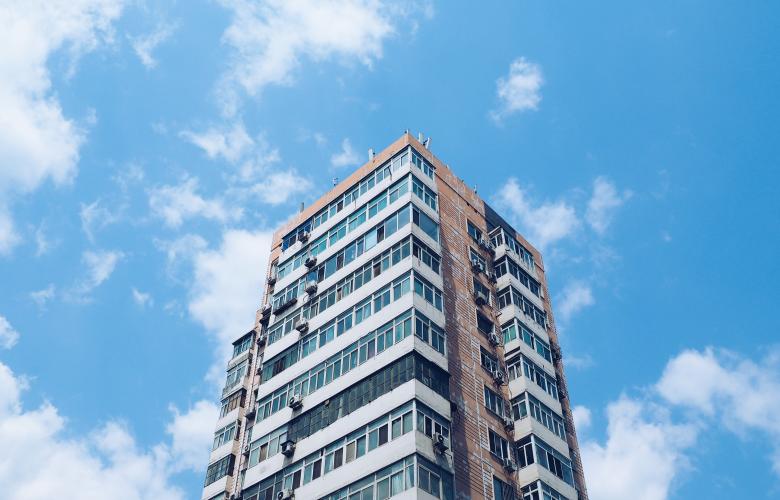Property data company Tokyo Kantei has recently released data stating that second-hand apartments in Tokyo built around 10 years ago had impressive resale value in 2017.
Data shows that in 2017, apartments near 154 train stations — out of the 683 around the Tokyo metropolitan area — were sold for the same price or more than when they were built 10 years prior.
On average, the value of second-hand apartments increased by 91.5% (compared to their original value), with apartments close to Bakuro-yokoyama Station having the greatest resale value at 155%.
Average breakdown:
- 154 stations (22.5%) had over 100% in resale value,
- 177 stations (25.9%) were between 90-99% in resale value,
- 215 stations (31.5%) were between 80-90%,
- 100 stations (14.6%) were between 70-80%, and
- 37 stations (5.5%) were under 70% in resale value.
This measurement of property resale value applies to apartment buildings that were initially built between January 2006 and December 2008, and were sold as a resale property between January and December 2017. The data shown in this article is gathered only from properties that were built for residential purposes and are over 30 square meters in size.
Most of these properties were built a little before the peak of the mini real estate bubble of 2008 in Japan, which means they were initially built and sold for reasonable prices. This factor has greatly contributed to the high resale value of these property listings. Areas near central Tokyo mostly have 100% resale value, especially along the JR Yamanote Line and near Yokohama. The resale value slowly decreas as it gets closer to suburban areas. Apartments near stations with direct access, or that provide shortest routes to central Tokyo (where there is a high concentration of bsusinesses and offices) are in high demand.
Station with high resale value in east Tokyo
Stations with little "brand value" and that were undervalued 10 years ago saw a huge spike in value. These include stations such as Monzen-nakacho (ranked #10 for highest resale value according to the data) on the Tokyo Metro Tozai Line, and Iwamoto-cho (ranked #6) on the Toei Subway Shinjuku Line, and Bakuro-yokoyama (ranked #1) on the Toei Subway Shinjuku Line.
These stations all provide great access to the Marunouchi, a central office area in Tokyo, and all are under 10 minutes by train to Otemachi Station.
Rent versus sale price
While initial investment may be higher, apartments in central locations (within a 10-minute walk from train stations) in Tokyo that were rented out for relatively high prices also have a tendency to resell for high prices.
Pricing analysis by area
On the high end of pricing, most stations that ranked high for resale value were in extremely central in locations, such as Chiyoda ward and Minato ward (which includes Akasaka, Aoyama, Azabu and Shirogane). These are high-end areas that have always possessed brand value. They're on the southern side of JR Yamanote Line, and include locations such as Omotesando (ranked at #9) and Roppongi (ranked at #11). Due to the convenient location within Tokyo and their status, these areas are desired from investors both domestic and international, and their asset value continues to soar.
In the mid-range of pricing, these stations possess potential for growth as an area due to urban development, addition of new stations, and increase in high-rise residences. Areas as such include the Wangan/Bay area, and stations such as Kachidoki (ranked #54), Tsukishima (ranked #49), and Musashi-Kosgui (ranked #30). Also, stations such as Ebina (ranked #52) that are rural but have direct access to central Tokyo and Yokohama are popular with families with children, as they are more affordable and still hold good resale value.
On the lower end of pricing, the stations are a bit more rural but are terminal stations that connect different train lines. These include stations such as Kita-senju (ranked #90) and Kawasaki (ranked #98). They also include stations such as Ofuna (ranked #69) and Odawara (ranked #97), which are popular with the retirees.
Rank #1: Bakuro-yokoyama
Most listings in this area, new or second-hand, are within a 5-minute walk to a train station. It connects to Higashi-nihonbashi Station of Toei Asakusa line, and Bakurocho Station of Sobu Express line. Not only that, it is about a 10-minute walk to Kodenma-cho Station on the Hibiya line.
Bakuro-yokoyama is right where Kanda River and Sumida River meet, and is close to Asakusa and Ryogoku stations, both of which maintain a traditional Japanese feel. This has been a happening part of town since the Edo period thanks to the long-standing wholesale stores found in the area. However, since about 15 years ago, it has seen a sharp increase in the building of new apartment buildings, bringing in more new residents.
Rank #7: Meguro
Recently, there has been a wave of global companies setting up offices in this area, co-existing with residential apartment buildings. Such companies include corporate giants such as Amazon Japan and Starbucks Japan. Despite all the real estate development, the Institute for Nature Study (of the National Museum of Nature and Science) is also located in the area, contributing greenspaces and a bit of calm. In 2017, a new high-rise building for offices and residences was completed right by the station, which has added to the area's appeal to potential investors and residents.
Data sources:
By Kaori Kitagawa
Similar to this:
Keikyu Main Line: Big potential area stretching from central Tokyo to Miura Peninsula
Tokyo's Yamanote Line: Is it better to buy property on the inside or outside?
Average prices of resale apartments on the rise in major metropolitan area





